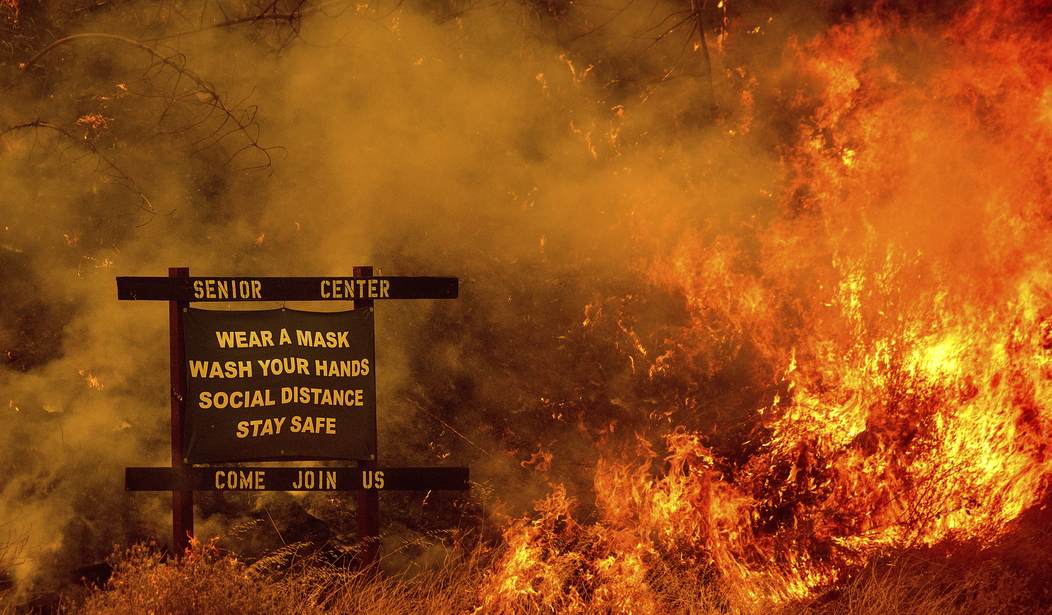I normally try to avoid most of the gloom and doom themes that repeat on a loop on social media, or at least as much as I can. But looking around lately, even I have to admit that things have been getting pretty weird out there, both in the United States and around the world. The red vs. blue divide in America is the most extreme that I’ve witnessed in my lifetime and it sometimes looks like the approach of a new civil war. Aliens are buzzing people’s houses in their UFOs (or whoever or whatever is driving them) and the government is even admitting they are real. Wildfires are breaking out in large numbers and in sizes that have rarely been seen. Even the most optimistic among us have to be getting the feeling that things are kind of a mess.
There isn’t much to be done about the social and cultural divide in the country, at least as far as I can see. And the weird spaceships don’t seem to be doing anything to harm anyone. (Unless you shoot at them first, anyway.) But perhaps the record high temperatures being seen out west and the resultant wildfires are something we can wrap our minds around and even propose some reasonable solutions to help the situation. Predictably, CNN approaches the story from the globalist climate change, anti-fossil fuels alarmism angle.
The UN’s Intergovernmental Panel on Climate Change (IPCC) has a clear message: The human-caused climate crisis is worsening extreme weather around the globe.
The world is now 1.1 degrees Celsius warmer than pre-industrial levels and is on a collision course with the critical threshold of 1.5 degrees, the report concludes, which countries in the Paris Accord agreed was the ideal limit to stave off the worse impacts.
Unless greenhouse gas emissions are slashed — and fast — the report’s authors say it’s going to get worse. With significant advances in computing power, scientists are more confident than ever in attributing extreme weather to climate change.
To nobody’s surprise, the conclusion reached by the UN climate change panel immediately went to greenhouse gas emissions and labeled it as “the human-caused climate crisis.” If that’s your take on the subject as well, feel free to indulge yourself, but I think the jury is still out. I’ll include my periodic reminder that we know with a great degree of certainty that the planet has been going through wild swings in its climate conditions for as long as we’ve had a planet. During the Cryogenian glaciations, which took place between 720 million and 635 million years ago, the world almost entirely froze over into what scientists refer to as “snowball Earth.” During the late Jurassic period, centuries went by when there wasn’t a single speck of ice anywhere on the planet. (No doubt due to some secret dinosaur fracking program we haven’t discovered yet.) We’ve also had multiple ice ages since then, interspersed with warm periods.
The point is that the climate changes a lot. We may turn around and enter another cooling period in the future or it might keep heating up. But it’s difficult to deny that it certainly seems significantly hotter at the moment, at least in some places. So is there something we can do about it without wiping out our energy industry, wrecking the power grid and turning control of our national energy and climate policies to the globalists at the UN? There just might be.
That’s where the trillion tree campaign comes in. For several years now, a group of concerned environmentalists have been trying to attract support for the idea of literally planting a trillion new trees around the world, rolling back deforestation, and creating a huge, positive impact on the planet’s environment. You don’t need to be a climate scientist to understand this concept. When I walk out into my back yard during the summer there’s an ongoing experiment taking place that anyone can grasp. I have two huge maple trees in my yard. When the sun is shining, it can get pretty hot out on the portions of the lawn that are in the sun. If you walk under the trees, the temperature drops significantly. The more trees you have, the more this effect is multiplied.
On top of that, if you really want to focus on carbon emissions and greenhouse gases, leave that job to the trees also. Trees suck carbon dioxide out of the air and produce oxygen. And shouldn’t that have been the goal all along?
Perhaps one of the reasons the temperature has been rising in the modern era is that since humans began harvesting trees on an industrial scale, we’ve eliminated 46% of the forests that once covered the world. There are plenty of places we could be planting trees without disrupting society very much. This is a totally achievable goal and you wind up with a lot more pleasant scenery to boot.
But the real problem with this plan is the question of whether or not we still have enough fresh water to support all of those trees, not to mention our own needs. We’ve been depleting the planet’s water supply for a long time now and some sociologists predict that the next big outbreak of wars on Earth may be driven by the need to control the remaining supplies of water. The sad reality is that we currently have far more people on Earth than could be supported without advanced technology and we suck up a lot of water. But who knows? With a lot more trees and cooler temperatures, perhaps we’ll generate more clouds and rain. Hey… it’s worth a shot, isn’t it? And it’s way better than a carbon tax.









Join the conversation as a VIP Member